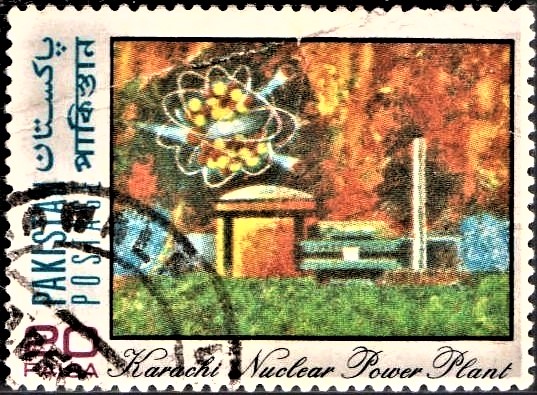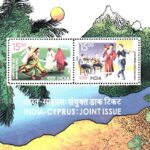
India-Russia : Joint Issue 2017
Complete set of 2 nos. of commemorative postage stamps on the Folk Dances of India and Russia : Bhavai and Beryozka Dance :


 Issued by India
Issued by India
Issued on Oct 26, 2017
Issued for : Department of Posts is pleased to release a set of two Commemorative Postage Stamps between India and Russia on the theme Folk Dance featuring ‘Bhavai Dance’ of India and ‘Beryozka Dance’ of Russia.
Credits :
Stamps/Miniature Sheet/FDC/Brochure : Shri Kamleshwar Singh
Cancellation Cachet : Smt. Nenu Gupta
Type : Miniature Sheet, Mint Condition
Colour : Multi Colour
Denomination : 2500 & 500 Paise
Stamps Printed : 0.5 million each
Miniature Sheet Printed : 0.1 million
Printing Process : Wet Offset
Printer : Security Printing Press, Hyderabad
About :
- Russia has been a longstanding and time-tested partner for India. Development of Indo-Russian relations have been a key pillar of India’s foreign policy. Since the signing of “Declaration on the India–Russia Strategic Partnership” in October 2000, Indo-Russian ties have acquired a qualitatively new character with enhanced levels of cooperation in almost all areas of the bilateral relationship including political, security, trade and economy, defence, science and technology, and culture. Under the Strategic Partnership, several institutionalized dialogue mechanisms operate at both political and official levels to ensure regular interaction and follow up on cooperation activities. There is regular high-level interaction between the two countries.
- India has longstanding and wide-ranging cooperation with Russia in the field of defence. Indo-Russian military technical cooperation has evolved from a buyer-seller framework to one involving joint research, development and production of advanced defence technologies and systems. BrahMos Missile System as well as the licensed production in India of SU-30 aircraft and T-90 tanks, are examples of such flagship cooperation. The two countries also hold exchanges and training exercises between their armed forces annually.
- Making the economic partnership a strong pillar of the bilateral partnership like other areas of cooperation between India and Russia is a key priority for both governments. Major items of export from India include pharmaceuticals, tea, coffee and tobacco, machinery and mechanical appliances, organic chemicals, and electrical machinery and equipment. Major items of import from Russia include pearls, precious and semi-precious stones & metals, nuclear power equipment, electrical machinery and equipment, mineral oil & products, iron & steels and optical, precision and surgical equipment. India and Russia are exploring various ways for enhancing bilateral trade.
- Russia is an important partner for India in the area of peaceful use of nuclear energy. It recognizes India as a country with advanced nuclear technology with an impeccable non-proliferation record. Kudankulam Nuclear Power Plant (KKNPP) is being built in India with Russian cooperation. Indo-Russian cooperation in the field of peaceful uses of outer space dates back to about four decades. 2015 marked the 40th anniversary of the launch of India’s first satellite “Aryabhatt” on a Russian (then USSR) launch vehicle ‘C-1 Interkosmos’. In 2017, India and Russia signed a framework agreement on cooperation in the peaceful uses of outer space, including satellite launches, GLONASS navigation system, remote sensing and other special applications of outer space. Both sides are also exploring the possibility of cooperation in manned space flight.
- There is a strong tradition of Indian studies in Russia. Jawaharlal Nehru Cultural Centre at the Embassy of India, Moscow (JNCC) maintains close cooperation with leading Russian institutions. There is a Mahatma Gandhi Chair on Indian Philosophy in the Institute of Philosophy, Moscow. About 20 Russian Institutions, including leading universities and schools, regularly teach Hindi to about 1500 Russian students. Apart from Hindi, languages such as Tamil, Marathi, Gujarati, Bengali, Urdu, Sanskrit and Pali are taught in Russian Institutions. There is a strong interest among Russian people in Indian dance, music, yoga and Ayurveda. There are regular cultural initiatives to promote people-to-people contacts between India and Russia, including reciprocal Years of Culture.
- Indian Community in the Russian Federation is estimated at about 30,000. About 500 Indian businessmen reside in Russia out of which around 200 work in Moscow. It is estimated that about 300 registered Indian companies operate in Russia. There are approximately 4,500 Indian students enrolled in medical and technical institutions in the Russian Federation. Hindustani Samaj is the oldest Indian organization in Russia functioning since 1957.
- The Theme for India–Russia: Joint Issue is “Folk Dance”. The folk dance selected for depicting in Indian stamp is Bhavai and the folk dance selected for depicting in Russian stamp is Beryozka. The miniature sheet design has structures of Hawa Mahal from Jaipur, India and Saint Basil’s Cathedral from Moscow, Russia which shows the strong bond between the two great civilizations.
- Bhavai is a genre of folk dance popular in Rajasthan, India. The Dance form consists of veiled women dancers balancing up to seven or nine brass pitchers as they dance nimbly, pirouetting and then swaying with the soles of their feet perched on the top of a glass or on the edge of the sword. There is a sense of cutting edge suspense and nail biting acts in the dance. The accompaniment to the dance provided by the male performers singing melodious songs and playing a number of musical instruments, which include pakhawaj, dholak, jhanjhar, sarangi and harmonium. Traditionally, this genre of dance was performed by the female performers belonging to the Jat, Bhil, Raigar, Meena, Kumhar and Kalbelia communities of Rajasthan. It is assumed that this genre of dance has evolved from the exceptional balancing skills of the females of these communities developed because of carrying a number of pots of water on head over long distances in the desert.
- Beryozka round dance is one of the famous Russian folk dances. This is an ancient round social Slavonic ritual folk dance. Dancers hold hands and the distinctive element of the dance are simple steps in a circle and simultaneous squatting of all dancers on a certain beat of the music. A stage version is based on the folk dance. In this case, women perform it wearing pseudo-Russian stage outfits, styled on the Nizhny Novgorod girls (a jacket, a sarafan, a kokoshnik or a headscarf) their hair is braided. The dancers move in a circle, after each other, in single file, in two lines, rotating around each other or in pairs around common centers in the groups. The steps are short and frequent, creating the impression of slipping (like a swan swimming). The dancers hold handkerchiefs or branches of birch in their hands which symbolize farewell to the spring. The general mood of the dance is melancholic.
- Text : Based on the information received from Ministry of External Affairs, Government of India and Russia Post.
Subscribe
Login
0 Comments
Oldest







